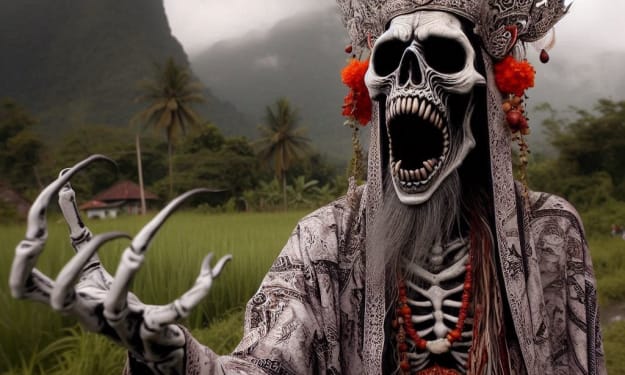
Perhaps if Abraham (Bram) Stoker (1847–1912) had not suffered from an illness that forced him to bed until the age of eight, the themes of endless sleep and resurrection from the world of the dead would not have inflamed his imagination so much. The miraculous healing, the physical recovery of which he was the protagonist, capable of transforming an infirm into an athlete, has much in common with the myth of the vampire who, through blood, rejuvenates, regenerates his tissues, inverts the course of nature.
Born in Clontarf, Ireland — formerly land of goblins and banshees — Bram Stoker graduated from Trinity College in mathematics and was a theater critic for The Evening Mail. He married Florence Balcombe, for some time also courted by Oscar Wilde, with whom he had only one son. He cultivated important friendships with Arthur Conan Doyle, with the Pre-Raphaelite painter Whistler, and one, very close, with the actor Henry Irving of which he was secretary. Allusions are all too easy, it is certain that the myth of the vampire has always been placed in that aura of deviated sexuality, which goes from pedophilia — think of the children Lucy Westenra feeds on and Claudia’s vampirization in Interview with the Vampire — to necrophilia, but always in a perspective of justification, decriminalization of the erotic act. From Bram Stoker to Anne Rice, down to most of the Stephenie Meyer saga, sex becomes oral, it is done from the waist up, in a voluptuousness that, in addition to extreme, superhuman pleasure, provides knowledge, eternal life, wisdom , beauty. At least until Bella Swan and Edward Cullen decide that you can also try to consume the marriage, generating a small human — vampire hybrid.
The manuscript of Dracula already circulated among Stoker’s friends in 1890 but was published only in 1897, after seven years of in-depth studies on Balkan culture and beliefs. The novel is located in a tradition both antecedent and later, it acts as a watershed, a milestone. It connects to Goethe, to Polidori’s The Vampyre, to the works of Ann Radcliffe, Monk Lewis, Maturin, Mary Shelley, Edgar Allan Poe and the slightly later Rider Haggard. It tells the well-known story of Count Dracula, a nosferatu, that is, an undead of the Central European tradition. The inspiration had been provided to Stoker by the Hungarian Arminius Vambéry, (and, apparently, even from a nightmare arising from a feast of prawns), a professor who had introduced him to the legend of Vlad Tepes Dracul, the Impaler. The Irishman never visited the places he describes in his novel, namely Bistritza and Transylvania, but wrote a very realistic novel, almost documentary despite the topic.
The atmospheres are dark and obscure but the tone is clerical. It should not be forgotten that the most famous Gothic novel was written by the author of “The duties of employees in hearings for minor crimes in Ireland”. The language is weighed down by a nagging attention to detail and by an excessive repetitiveness of the terms. The author goes on to make us reflect, the linguistic imperfection creates a sense of truth, of growing anxiety and also of unusual modernity for the time.
But what matters is the creation of a mythical and archetypal character. The minor characters are not well characterized, only Dracula stands out. The vampire is evil, it is the unknown that is hidden in everyday life and within us but he is also the romantic byronic and satanic hero. Just as Polidori’s Lord Ruthven was inspired by the feminine, disturbing and diabolical figure of Byron, as well as the modern vampires of Anne Rice — Louis, Lestat, Armand and the little girl Claudia, immortal doll fixed in an eternal childish image — will be surrounded by a romantic aura, of melancholy, of boundless despair, of an eternal need for redemption never satisfied, even Count Dracula is wrapped in an aura of solitude and pain. The same marginalization and cupio dissolvi of the monster created by Victor Frankestein.
“I am not looking for gaiety or cheerfulness, nor the voluptuous brightness of the light of the sun and the sparkling waters that are so pleasing to those who are young and gay. I am no longer young. And my heart, worn out by the years of mourning for my dead, is not well suited to gaiety. And then, the walls of my castle are falling apart; there are many shadows, and the wind blows cold through the battlements and the broken windows. I love darkness and shadows, and as far as possible I would like to be alone with my thoughts. “
Stoker’s vampire, however, differs from that of Polidori while retaining its aristocratic melancholy. The bond with animals and the forces of nature is accentuated, in particular with the wolf, a bond that will then be taken up by Meyer in the vampire dichotomy Edward / werewolf Jacob.
Count Dracula will die at the hands of Van Helsing and Jonathan Harker and his death will mean atonement. The same redemption that, in Coppola’s beautiful film, Dracula will receive from Mina, reincarnation of his lost woman. The film, in fact, more than ever puts the accent on the union of love and death, eros and thanatos, so dear to romantic and decadent atmospheres.
“What will console me as long as I live was to see on his face, just at the moment of the final dissolution, an expression of peace that I never imagined I could see.”
More than a literary work itself, we can speak of a myth, an archetype that crosses tradition, both enriches, changes and, at the same time, is fixed at every rewrite, at every cinematographic or theatrical adaptation. The atmospheres are the same, haunted and ghosted, traceable in Emily Brönte, with the Yorkshire moors that turn into the snowy cliffs of the Carpathians.
“We soon found ourselves enclosed in the trees, which in some places crossed each other and arched on the road, so much so that it seemed as if we were going through a tunnel. Once again, large rocks were frowning over us, escorting us grumbling to the right and left. Although we were sheltered, I felt the wind rise, moan and whistle among the rocks, and the branches of the trees collided with each other as we passed. It was getting colder, and an impalpable snow began to fall, very soon we ourselves, and all around us, were covered in a white blanket. The penetrating wind still carried the howling of the dogs, which however became weaker and weaker as we progressed on our way. The sound of wolves rang ever closer, as if they were encircling us.”
Every place (the Count’s castle, Lucy Westenra’s house, Carfax) corresponds to a killing. The death of Lucy, an innocent and unaware victim, discriminates between those who are ignorant, and therefore at the mercy of evil, and those who know it to be able to fight it. Lucy is the decadent prototype of violated innocence, corrupt purity, the crumpled flower with a subtly erotic and forbidden scent. Mina is not very different in the book but acquires more depth and romantic value in Coppola’s film, embodying the love that goes beyond death, becoming an instrument through which Providence operates.
The structure of the narrative exploits the epistolary form but not only, using, in addition to the letters, also telegrams and newspaper articles, in an already very modern game of facets. The narrating self is multiple.
“The story, therefore, is not made for the voice of a single narrator, but for many, and these do not have a hypothetical reader as their referent, but from time to time themselves (through the diary, a sort of rethinking and fixation of events ), another character (by reading the diaries of others and by exchanging letters and telegrams) and only in the last resort the reader who, as an accidental spectator or witness, indirectly learns of the events. “ (Paola Faini)
About the Creator
Patrizia Poli
Patrizia Poli was born in Livorno in 1961. Writer of fiction and blogger, she published seven novels.
Enjoyed the story? Support the Creator.
Subscribe for free to receive all their stories in your feed. You could also pledge your support or give them a one-off tip, letting them know you appreciate their work.






Comments
There are no comments for this story
Be the first to respond and start the conversation.